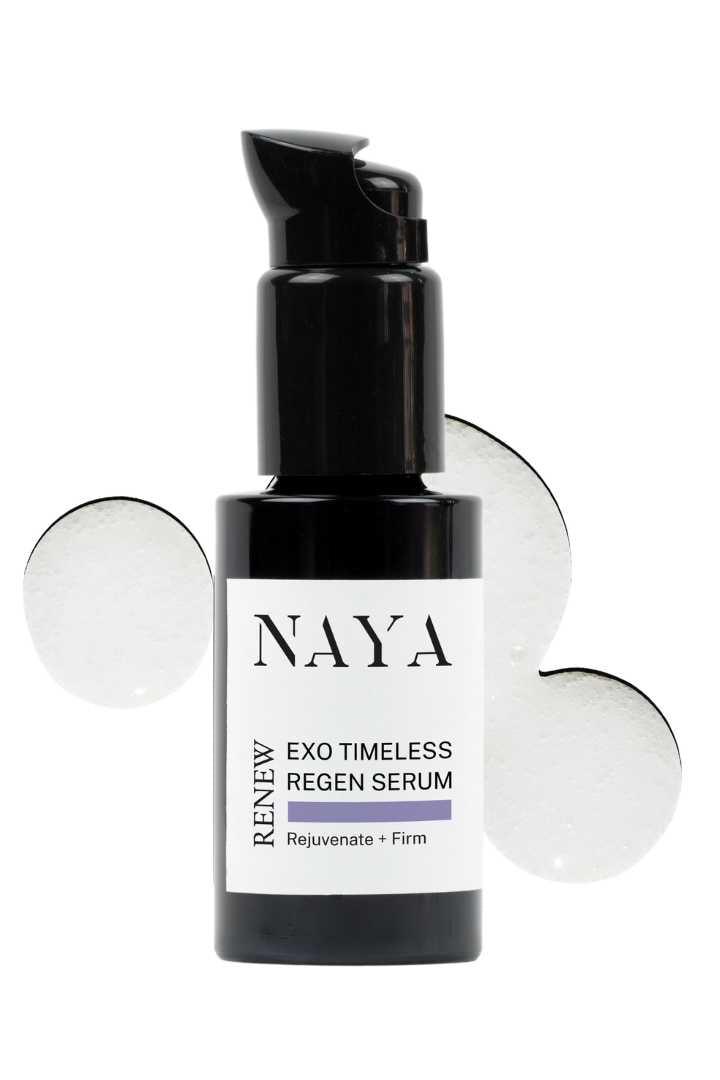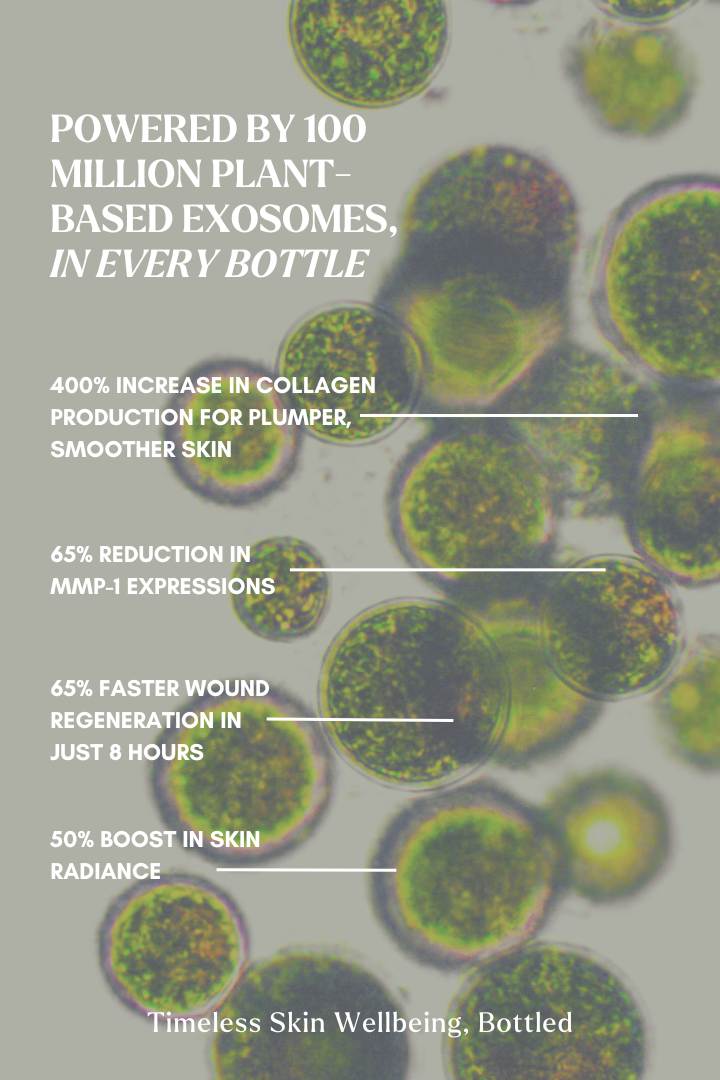Exosomes vs. Stem Cells: Understanding the Difference in Skincare
Exosomes Are Not Stem Cells – And Stem Cells Do Not Contain Exosomes
The skincare industry is filled with scientific terms that are often used to market and sell products. However, marketing jargon often leads to more confusion than clarity. One common misconception is the claim that "plant stem cells contain exosomes." This is incorrect, and in this article, we will explain why exosomes are not stem cells and why plant stem cells do not contain exosomes.
What Are Stem Cells?
Stem cells are unique cells that can self-renew and have the potential to differentiate into various cell types. In medical research and skincare, stem cells are significant because they can assist in tissue repair and regeneration. There are several types of stem cells:
-
Embryonic Stem Cells – Pluripotent cells that can turn into any cell type in the body.
-
Adult Stem Cells – Multipotent cells found in various tissues that help with repair and maintenance.
-
Induced Pluripotent Stem Cells (iPSCs) – Reprogrammed adult cells that regain pluripotency.
In cosmetics, the term "plant stem cells" is often used to market products, implying they have regenerative properties. It’s important to understand that plant stem cells cannot be compared to human stem cells and do not serve the same function in skincare.
What Are Exosomes?
Exosomes are small, lipid-covered vesicles secreted by cells to support communication between them. They contain bioactive molecules such as proteins, lipids, and micro-RNAs that can influence cellular behaviour. Exosomes are of interest in medicine because they can modulate immune responses and promote wound healing and tissue regeneration.
However, it is important to understand that exosomes are not cells. They do not have a nucleus, cannot divide, or differentiate into other cell types. Instead, they serve as messengers between cells.
The Misunderstanding: "Stem Cells Contain Exosomes"
The claim that plant stem cells contain exosomes is scientifically incorrect. Here's why:
-
Exosomes Are Not Part of Stem Cells: Exosomes are a byproduct of the cellular communication process and are secreted by cells. Even human stem cells do not contain exosomes; instead, they actively release them.
-
Plant Cells and Human Cells Are Different: Plant cells have a rigid cell wall, chloroplasts, and a different communication system compared to human cells.
-
No Scientific Evidence: There are currently no scientific studies showing that plant stem cells produce exosomes that play a role in the human body. Exosomes from human sources are actively studied for their therapeutic potential, but exosomes from plants (if they exist) do not have the same biological impact on human skin.
Exosomes and Stem Cells – Clarifying the Misunderstanding
Stem cells do not contain exosomes but release them. Exosomes are extracellular vesicles that act as messengers between cells. They carry bioactive molecules like proteins, lipids, and RNAs and influence the behavior of other cells by providing them with important signals.
It’s important to understand that exosomes are not integrated into the cell. They are produced through a cellular process, where a cell forms exosomes internally and then releases them to communicate with other cells. These exosomes are an active product of cellular metabolism but are not a structural component of the cell.
In the case of stem cells, the process of exosome release occurs in a similar way, but these exosomes are not part of the cell itself. They are stored in vesicular bodies (MVBs) until they are released and serve a different function than the stem cells.
Plant Stem Cells in Natural Cosmetics
Plant stem cells have proven to be highly effective in natural cosmetics as they support skin cells and stimulate regeneration. These plant cells can protect the skin from external influences and promote the skin's natural healing process. They enhance cell renewal and improve skin structure, making them valuable ingredients in anti-aging products.
However, it’s important to emphasize that plant stem cells serve a different function than exosomes. While plant stem cells directly support the regeneration and protection of skin cells, exosomes subtly yet powerfully communicate between cells by transferring bioactive signals. Both work in different ways and complement each other ideally in skincare, as they each target different levels of skin health and rejuvenation.
Why Brands Mislead Consumers
Many brands pick up on scientific discoveries to make their products seem more advanced and marketable. Exosomes, which are gaining importance in regenerative medicine and anti-aging research, are often mixed with stem cells by skincare brands to give the impression of innovation.
This misinformation is harmful for several reasons:
-
False Expectations: Consumers may believe they are receiving exosome therapy when in reality they are buying plant extracts without proven exosomes.
-
Scientific Inaccuracy: The misunderstanding spreads and dilutes the integrity of true exosome research.
-
Potential Regulatory Concerns: If brands claim their products contain exosomes when they do not, they may face scrutiny from regulatory authorities for misleading advertising.
What Does This Mean for Skincare Consumers?
If you're a skincare enthusiast or professional, it's important to critically question marketing claims and look for transparency. Here are some tips:
-
Look for Scientific Support: Brands using exosomes in their products should be able to provide clear scientific evidence and clinical studies.
-
Understand the Terms: Exosomes are extracellular vesicles, not cells. They are released by cells, not "contained."
-
Question the Hype Around Plant Stem Cells: While plant extracts may offer antioxidant benefits, they are not comparable to human stem cells and do not release exosomes.
The Future of Exosome-Based Skincare
Exosomes derived from human sources, particularly from mesenchymal stem cells (MSCs), are currently being investigated for their regenerative potential. These exosomes have been shown to:
-
Support collagen production
-
Reduce inflammation
-
Promote wound healing
-
Improve skin hydration and elasticity
But are there exosomes from plant sources?
Exosomes from Plant Sources at NAYA
At NAYA, we have made a groundbreaking discovery: We have derived exosomes from plant sources that possess the same remarkable properties as exosomes from human cells. These plant-derived exosomes support the skin in an innovative way by promoting cell communication, thereby stimulating regeneration and rejuvenation. It is particularly exciting that plant exosomes deliver the same potent effects as their human counterparts, allowing us to offer a more ethical and sustainable alternative in skincare. While plant stem cells primarily protect and regenerate the skin, exosomes take on the role of cell communication, fostering deep revitalization. The future of exosome-based skincare at NAYA is characterized by scientific validation, ethical sourcing, and transparent communication. We are proud to offer a genuine, sustainable solution that supports skin health in a natural way while harmonizing with modern scientific insights.
We are proud to be pioneers in this field and to lead the way with this innovative approach. The future of exosome-based skincare at NAYA is guided by scientific validation, ethical sourcing, and transparent communication. With this unique technology, we offer a sustainable and effective solution that supports skin health naturally while aligning with modern scientific research.
Conclusion
Exosomes and stem cells are not the same. The marketing spin that claims otherwise is misleading and not based on scientific reality which is frustrating for a consumer to be tricked by brands. As consumers and professionals, it is important to stay informed and demand transparency from brands.
Understanding the true role of exosomes and stem cells in skincare helps ensure that we are using products that truly support our skin health. Both have a role to play but both are different.
FAQs:
Do stem cells contain exosomes?
Stem cells do not contain exosomes by nature. Instead, stem cells release exosomes as part of their natural communication process. Exosomes are extracellular vesicles (EVs) that carry bioactive molecules (proteins, lipids, and RNAs) to influence other cells. They are not a structural component of stem cells, but a byproduct of cellular activities.
So if someone claims that stem cells “contain exosomes,” that is misleading. The correct description is: Stem cells can release exosomes, but they are not a fixed part of the cell.
How do stem cells release exosomes? Don’t they need to contain exosomes to release them?
It may seem like stem cells (or any cell) must contain exosomes to release them, but that's not how the process works. Instead, exosomes are actively formed inside the cells through a specialized biological pathway before being released. Here's how it works:
How Stem Cells Release Exosomes
1.Formation of endosomes – Inside the cell, the plasma membrane folds inward to form early endosomes. These structures help sort cellular materials.
2.Development of the multivesicular body (MVB) – Some endosomes mature into multivesicular bodies (MVBs) that contain intraluminal vesicles (ILVs). These ILVs are the precursors to exosomes.
3.Packaging of exosomes – While in the MVB, the ILVs are loaded with proteins, lipids, RNAs, and other molecules. The cell decides whether to break down the MVB or release its contents.
4.Release of exosomes – The MVB fuses with the plasma membrane, releasing the ILVs as exosomes into the extracellular space, where they travel to other cells to communicate.
Do stem cells contain exosomes before releasing them?
Technically, exosomes are formed within stem cells during the MVB process, but they are not stored as a permanent structural component. Instead, they are dynamically produced, packaged, and then released. Once released, they are no longer part of the stem cell itself, but act as independent messengers.
Important point
Stem cells do not naturally contain exosomes in the sense that a container holds a substance. Instead, they produce and release exosomes through a well-orchestrated cellular process.
Can a plant stem cell in a skincare product penetrate the skin and release exosomes?
No, a plant stem cell in a skincare product cannot penetrate the skin and release exosomes—and here's why:
Plant stem cells are not alive in skincare products
When plant stem cells are processed into cosmetic formulations, they are no longer alive. They are typically lysed (destroyed) and turned into extracts containing beneficial antioxidants, polyphenols, and other bioactive compounds—but they no longer retain the ability to function like stem cells. A non-living cell cannot perform cellular activities like releasing exosomes.
Marketing vs. Science
When a brand claims that plant stem cells in skincare products penetrate the skin and release exosomes, it confuses consumers. Plant stem cells in skincare products are beneficial in other ways (e.g., as antioxidants), but they do not function like human stem cells and certainly do not release exosomes into human skin.








Leave a comment